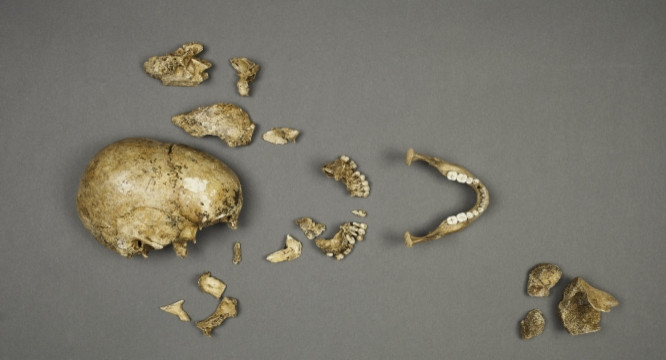Jamestown Settlers Likely Resorted To Cannibalism In The 'Starving Time' Of Failed English Colony

New scientific discoveries have indicated that settlers at Jamestown, the first English colony in America, likely resorted to the cannibalism of a young girl in the harsh winter of 1609.
Jamestown was the first attempt at an English colony on the American mainland, and by all accounts, the failed colony was a particularly terrible place to live. Founded in 1607 by roughly 500 settlers, Jamestown was located in a marshy area of Virginia, making European agriculture extraordinarily difficult.
Additionally, many of the Jamestown settlers were from a wealthy background and did not have the proper survival training. By the winter of 1609, mass starvation had broken out among the settlers, and only 61 of the original colonists survived what was known as “the starving time.” The BBC explains that during the "starving time," Jamestown settlers ate nearly anything they could get their hands on, including rats.
For years, scholars have speculated that Jamestown settlers turned to cannibalism in these lean times, but there was no definite proof. Until now.
According to the Smithsonian Newsdesk, a team of researches headed by the Smithsonian’s Douglas Owsley has discovered proof that early Jamestown settlers turned to cannibalism in the form of the smashed skull of a teenage girl. The girl, named “Jane” by researchers, was approximately 14 when she died.
Owsley says the findings are entirely consistent with cannibalism, and that the Jamestown settlers likely killed and ate the girl’s body and brains sometime in the winter of 1609, when the settlement was at its darkest period.
“The desperation and overwhelming circumstances faced by the James Fort colonists during the winter of 1609–1610 are reflected in the postmortem treatment of this girl’s body,” said Owsley. “The recovered bone fragments have unusually patterned cuts and chops that reflect tentativeness, trial and complete lack of experience in butchering animal remains. Nevertheless, the clear intent was to dismember the body, removing the brain and flesh from the face for consumption.”
Researchers found the girl’s body in a grave at the original Jamestown settlement. The girls’ skull had been split into pieces with an ax after four successive attempts. Researchers also determined that knife marks on her skull indicated she had been skinned for consumption. However, researchers were not able to determine if “Jane” was killed by settlers to be eaten or if she died naturally and settlers simply made use of her body.
Initially, Jamestown settlers were friendly with the native Paspahegh tribe, who provided settlers with gifts of tobacco and provisions. However, relations soon took a turn for the worse, and Jamestown settlers killed almost every member of the tribe in a brutal war. During the "starving time," Jamestown was under siege by the Paspahegh, according to the BBC. By 1611, four years after the Jamestown settlers landed in Virginia, there was no remaining trace of the Paspahegh tribe.
Watch a Smithsonian video explaining the Jamestown cannibalism below.
© Copyright IBTimes 2025. All rights reserved.





















